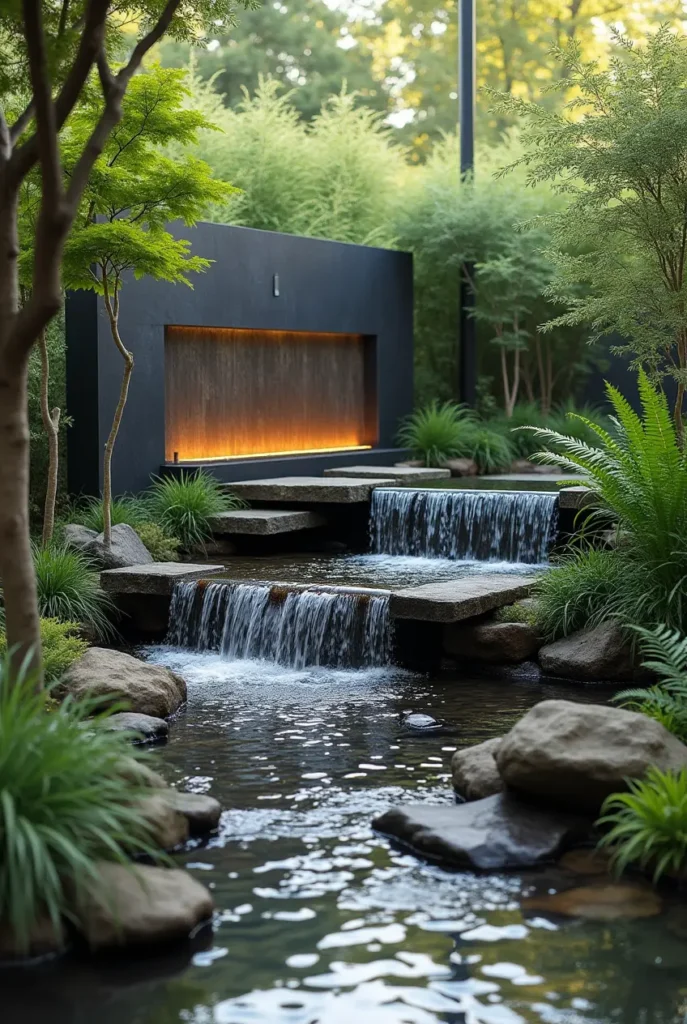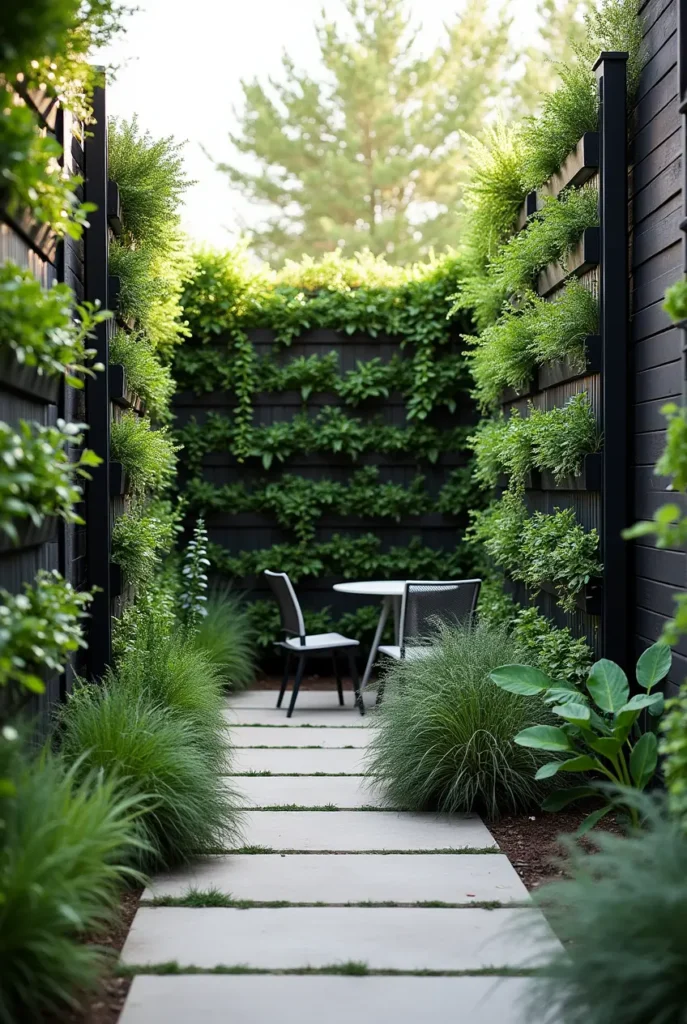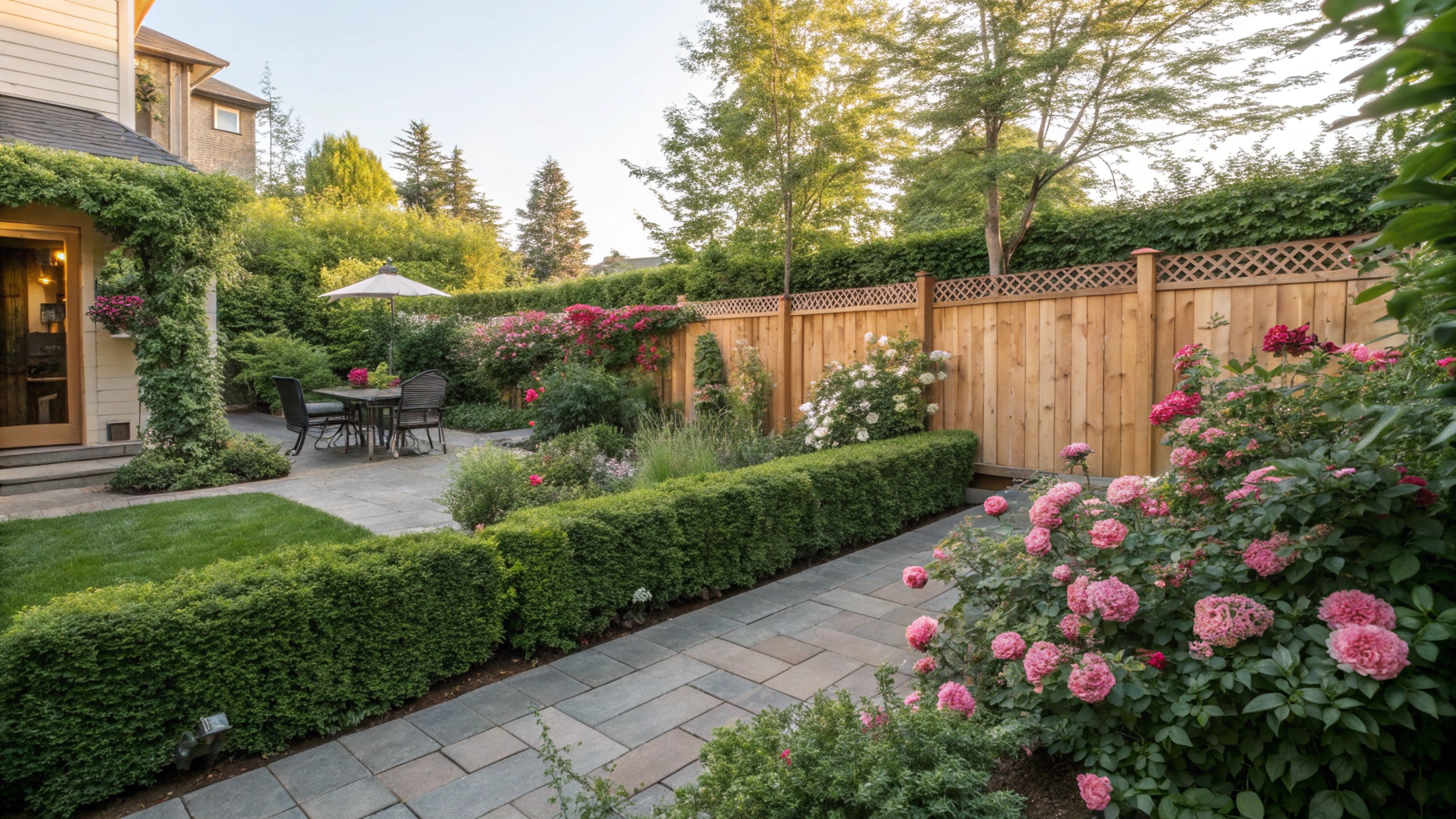Do you ever feel like you’re living in a fishbowl? I remember the day I moved into my dream home – the excitement quickly faded when I realized my neighbors had a perfect view of every barbecue, morning coffee, and family gathering I hosted. Creating a private sanctuary in your backyard isn’t just about keeping prying eyes out; it’s about crafting a personal retreat where you can truly unwind and be yourself.
As we move into 2025, backyard privacy solutions have evolved far beyond the basic wooden fence. Today’s homeowners are embracing innovative, stylish, and eco-friendly options that transform outdoor spaces while maintaining harmony with nature and neighborhood aesthetics.
In this comprehensive guide, I’ll walk you through 10 creative approaches to backyard privacy that blend functionality with modern design sensibilities, helping you reclaim your outdoor sanctuary.
Table of Contents
Why Backyard Privacy Matters More Than Ever
In our increasingly connected world, private outdoor spaces have become precious commodities. According to a recent American Society of Landscape Architects survey, privacy enhancements rank among the top three requested features for backyard renovations, with 85% of homeowners citing privacy as “extremely important” in their outdoor living spaces.
Privacy isn’t just about seclusion—it’s about creating a sense of security and personalized comfort that allows you to fully enjoy your outdoor living area. Let’s explore the most innovative and effective solutions for 2025.
1. Living Privacy Screens: The Green Wall Revolution
Vertical Gardens With Purpose
Living walls have transcended mere aesthetics to become functional privacy solutions. These botanical barriers create natural seclusion while improving air quality and reducing noise pollution.
Best Plants for Privacy Green Walls:
| Plant Type | Privacy Level | Maintenance | Climate Zones |
|---|---|---|---|
| Bamboo | High | Moderate | 5-11 |
| Arborvitae | Very High | Low | 3-8 |
| Climbing Roses | Medium | High | 4-9 |
| Ivy Species | Medium-High | Low | 4-10 |
| Tall Ornamental Grasses | Medium | Low | 5-11 |
Pro tip: Consider “instant privacy” options like pre-grown bamboo screens that can be installed in a single weekend, providing immediate seclusion while younger plants mature.
Layered Plantings for Depth
Rather than relying on a single row of plants, landscape designers now recommend a layered approach:
- Tall background plants (trees and large shrubs)
- Mid-height shrubs and ornamental grasses
- Foreground perennials and ground covers
This multi-dimensional strategy not only enhances privacy but creates visual interest throughout the seasons.
2. Smart Privacy Solutions: Tech-Enhanced Boundaries
Automated Screens and Canopies
Smart outdoor living has revolutionized backyard privacy with automated solutions that deploy exactly when needed:
- Retractable privacy screens with weather sensors
- Smart glass panels that change opacity via smartphone
- Motorized pergola louvers adjustable for sun, wind, and privacy
These technological innovations allow you to adapt your privacy level to different situations—hosting a party, intimate dining, or quiet contemplation—all with the touch of a button.
Privacy-Enhancing Lighting Design
Strategic lighting can create privacy through controlled visibility:
- Downward-facing path lights that illuminate your space without broadcasting to neighbors
- Silhouette lighting that creates visual barriers through contrast
- Smart outdoor lighting systems programmable for different privacy scenarios
“Lighting design has become as important as physical structures in creating backyard privacy,” explains Claire Josephson, landscape lighting designer. “By controlling what’s visible and what remains in shadow, we can craft privacy without building walls.”
3. Architectural Screens: Modern Patterns and Materials
Contemporary Panel Systems
Architectural privacy screens have evolved dramatically from basic lattice panels. Today’s options include:
- Laser-cut metal panels with custom geometric patterns
- Sustainable composite materials that mimic natural textures
- Modular panel systems that can be reconfigured as needed
These designer screens create semi-transparent boundaries that filter views while allowing light and air circulation—perfect for urban and suburban settings where total blockage might feel oppressive.
DIY-Friendly Screen Projects
For the hands-on homeowner, several creative screen projects offer weekend solutions:
- Repurposed shutters mounted between posts
- Sail cloth panels in overlapping arrangements
- Woven natural material screens (willow, bamboo, reed)
These DIY options can reduce costs while allowing for personal expression and customization.
4. Water Features That Create Acoustic Privacy
Sound-Masking Fountains and Cascades
Sometimes visual privacy isn’t enough—acoustic privacy matters too. Water features provide natural white noise that masks conversations and creates a sense of seclusion:
- Wall fountains that combine visual screening with sound
- Pondless waterfalls requiring minimal maintenance
- Bubbling boulder installations that blend with natural landscapes
The sound of moving water not only blocks unwanted noise but adds a sensory dimension that enhances relaxation and mindfulness in your outdoor sanctuary.

5. Flexible Privacy Solutions
Movable Partition Systems
Fixed privacy structures aren’t always ideal. Flexible systems allow for adaptability based on weather, occasion, and desired privacy level:
- Wheeled planter boxes with tall plants
- Freestanding decorative panels on bases
- Outdoor curtain systems with weather-resistant fabrics
These solutions are particularly valuable for rental properties or spaces that serve multiple functions throughout the year.
Seasonal Privacy Strategies
Consider how your privacy needs change with the seasons:
| Season | Privacy Challenge | Seasonal Solution |
|---|---|---|
| Spring | Neighbors spending more time outdoors | Fast-growing annual vines on temporary supports |
| Summer | Extended daylight hours | Outdoor curtains and canopies |
| Fall | Deciduous plants losing leaves | Strategic evergreen placement |
| Winter | Reduced natural screening | Decorative screens combined with outdoor lighting |
6. Vertical Gardens and Green Walls
Living Privacy Barriers
Vertical gardens have evolved from simple novelties to sophisticated living architecture:
- Modular living wall systems with integrated irrigation
- Vertical vegetable and herb gardens that combine privacy with functionality
- Native plant green walls that support local ecosystems
“We’re seeing tremendous innovation in vertical garden technology,” notes urban horticulturist Maya Wilson. “New systems are making maintenance dramatically easier while improving plant health and longevity.”

Self-Sustaining Ecosystems
The latest vertical garden systems incorporate:
- Rainwater collection integration
- Automated drip irrigation with moisture sensors
- Precision nutrient delivery systems
- Plant selection optimized for vertical growth patterns
These advancements make living walls increasingly practical for average homeowners seeking sustainable privacy solutions.
7. Multi-Functional Privacy Structures
Privacy-Plus Designs
Modern privacy solutions rarely serve just one purpose. Today’s designs integrate multiple functions:
- Privacy screens with built-in bench seating
- Living walls that incorporate outdoor kitchen elements
- Sound barriers that double as outdoor movie screens
- Privacy fences with integrated storage compartments
These multi-purpose structures maximize limited space while enhancing overall functionality.
8. Sustainable Privacy Solutions
Eco-Friendly Materials and Approaches
Sustainability has moved from trend to requirement in outdoor design:
- Reclaimed wood privacy structures with natural weathering
- Sustainable composite materials with 50+ year lifespans
- Solar-integrated privacy screens that generate power
- Rainwater-harvesting privacy walls
“The most innovative privacy solutions now address ecological concerns while solving practical needs,” explains environmental designer Jordan Ramirez. “Clients increasingly demand sustainability alongside functionality.”
9. Zoning and Layering for Privacy Depth
Strategic Space Planning
Rather than attempting to screen an entire yard, consider creating “privacy zones” for different activities:
- Intimate conversation areas with enhanced screening
- Dining spaces with moderate privacy elements
- Transitional zones with filtered views
This approach creates psychological boundaries that enhance privacy perception without completely walling off your space.
Privacy Through Elevation Changes
Subtle topography adjustments can dramatically enhance privacy:
- Sunken gathering areas that naturally screen sightlines
- Raised platforms that provide strategic viewpoints while blocking ground-level visibility
- Terraced designs that create natural barriers
10. Artistic Expression Through Privacy Features
Statement Privacy Elements
Privacy features can become signature design elements:
- Sculptural screens that serve as artistic focal points
- Living art installations that evolve through seasons
- Locally-made privacy elements that reflect regional character
These artistic approaches transform privacy from a necessary function into a celebrated feature of your landscape design.
Practical Considerations for Backyard Privacy Planning
Before implementing any privacy solution, consider these key factors:
- Local regulations and HOA rules – Many communities have restrictions on height, materials, and placement of privacy structures
- Maintenance requirements – Be realistic about the upkeep involved in living walls and complex features
- Budget alignment – Privacy solutions range from DIY projects under $500 to comprehensive systems costing $15,000+
- Neighbor relationships – The most successful privacy solutions consider adjacent property owners’ perspectives
- Environmental impact – Choose sustainable materials and plants appropriate for your climate zone
Conclusion: Creating Your Personal Private Paradise
Backyard privacy is ultimately about creating a space that feels like an extension of your home—a personal sanctuary where you can truly relax. The best solutions combine functionality with beauty, sustainability with practicality.
Whether you choose the natural approach of living walls, the flexibility of movable screens, or the technological innovation of smart privacy systems, the goal remains the same: crafting an outdoor environment where you feel secure, comfortable, and free to be yourself.
As we move through 2025, these creative privacy solutions will continue evolving, offering even more innovative ways to define and enhance our outdoor living spaces. The perfect private backyard is no longer just a dream—it’s an achievable reality with the right approach and inspiration.
FAQ About Backyard Privacy
Q: How can I create backyard privacy without blocking all sunlight?
A: Consider semi-transparent solutions like slatted panels, pergolas with partial coverings, or strategically placed tall plants that filter rather than block light completely. Vertical gardens can also be designed with varying plant densities to allow light penetration while maintaining privacy.
Q: What’s the fastest way to establish backyard privacy?
A: For immediate backyard privacy, consider combination approaches: install architectural screens or panels while simultaneously planting fast-growing species. Pre-grown bamboo, “instant hedges,” and mature container plants can provide immediate screening while more permanent solutions develop.
Q: How do I create backyard privacy in a small space?
A: In compact yards, vertical solutions maximize privacy without sacrificing valuable square footage. Consider living walls, narrow columnar trees, or multi-functional structures like privacy screens with integrated planters. Optical illusions through strategic plant placement can also enhance the perception of privacy.
Q: Are there backyard privacy solutions that work year-round?
A: For year-round backyard privacy, combine evergreen plantings with permanent structures. Consider coniferous trees, broadleaf evergreens, and architectural elements like decorative panels or screens that maintain their privacy function regardless of season.
Q: How can I achieve backyard privacy without annoying my neighbors?
A: The most neighbor-friendly backyard privacy approaches consider the visual impact from both sides. Discuss your plans with adjacent homeowners, consider attractive materials that look finished from all angles, and avoid creating a fortress-like appearance. Sometimes the most effective approach is creating privacy zones within your yard rather than perimeter screening.

